Features of growing the tomato hybrid "Tornado"
Tomatoes are famous for their versatility: they are used to make a variety of fresh salads, added to first and second courses, squeezed out juice, and used in canning. It is not surprising that this vegetable does not leave our table all year round.
Today we will talk about the Tornado tomato. This hybrid is suitable for those who do not have much experience in gardening. You can please yourself with a rich harvest without using chemicals. With proper care, the plant bears fruit abundantly.
Description and characteristics, yield indicators
Tomato Tornado f1 was released in Russia in 1997, and it received state registration a little later, in 1998.
It is grown both in open ground and under film covers. The mid-early hybrid Tornado is in great demand among gardeners and amateur farmers.
From the moment you planted the seedlings until the first fruits fully ripen, 105-110 days pass. A standard, determinant plant has a tall height - 150-190 cm. Ripe fruits have a characteristic red color, neat, round appearance. The average weight of Tornado fruits is 60-80 g, in the southern regions - up to 120 g. According to gardeners, the taste of the tomato is sweetish, with a real tomato aroma. Universal to use.
The crop is intended for cultivation in open ground, but produces a richer harvest in greenhouse conditions.
The plant is immune to major viral and fungal diseases (tobacco mosaic, cladosporiosis, fusarium and verticillium), but sometimes still gets sick.
Planting density is 3 bushes per square meter. This way, a harvest of up to 18-20 kg is obtained. According to photos and reviews of the Tornado tomato, when good conditions are created, 6-8 kg are obtained from one bush.
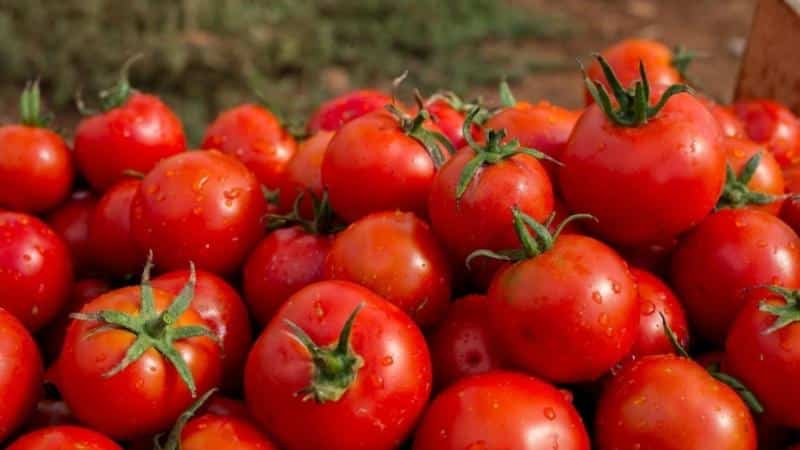
More detailed characteristics are listed in the table:
| Options | Indicators |
| Bush type | Plant determinant, moderate branching, with average formation of green mass. The leaves are dark green, simple, large. Bush height – 150-190 cm. |
| Growing method | Zoned for different areas. It bears fruit well in greenhouse shelters, but its main purpose is growing in unprotected soil. |
| Productivity | 6-8 kg from one bush. |
| Fruit | When ripe, the fruits turn red. They have a round uniform shape. The tomatoes are not large in weight, the average weight is 60-80 g, in the southern regions they reach 120 g. The pulp is soft and fleshy. The taste is excellent, sweetish, pleasant. Number of chambers – 4-6, dry matter content – 5%. |
| Transportability | Tomatoes are well stored and can withstand long-term transportation. |
| Ripening time | Mid-season variety. The first ripened fruits appear 105-110 days after the appearance of the first shoots. |
| Disease resistance | It has very high resistance to tobacco mosaic virus, cladosporiosis, fusarium and verticillium. |
Advantages and disadvantages
From the description of Tornado tomatoes, we can highlight the main advantages:
- high productivity;
- universal use of fruits;
- excellent varietal qualities of tomatoes;
- beautiful presentation;
- resistance to infections, fungi and insect pests.
The disadvantages include:
- intolerance to temperature changes;
- slight tendency to cracking.
How to grow
Sprouts begin to be planted in open ground only after the soil has warmed up.This indicator depends on the region. Seeds are sown two months before the planned transplantation into open ground. February-March are considered optimal months to plant seeds.
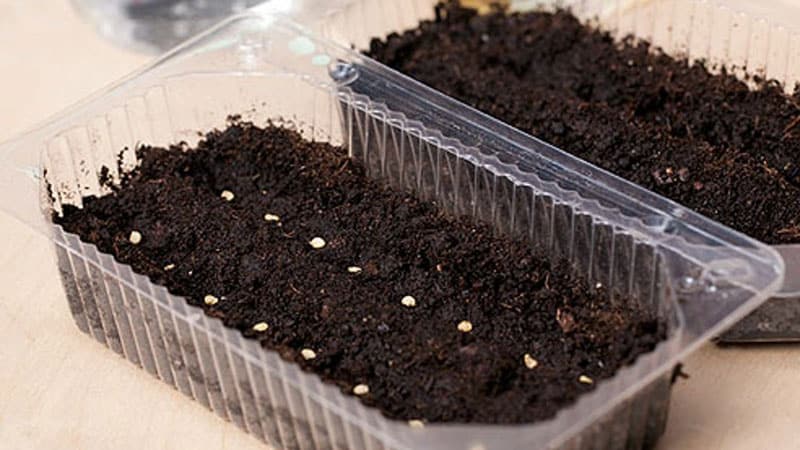
Seed preparation
Prepare the seeds and start sowing. Caring for seeds speeds up and increases germination and helps get rid of various infections.
Preparation of planting seeds:
- To begin, look through all the seeds and select material that can germinate. Remove blackened and damaged seeds and leave them in their correct, even shape. You can do this in a simpler way: add a little salt to the water and soak the planting material in it for 30 minutes. Bad seeds will float to the surface, while good ones will settle to the bottom.
- Hybrid tomatoes are processed by the manufacturer. But if you don’t trust seed suppliers, use your choice of product: hydrogen peroxide or potassium permanganate. Soak the seeds in the chosen product for 2 hours, and then rinse thoroughly with water.
- Also, for early germination, soak for 12 hours in a growth stimulator. These drugs are sold in stores. Home remedies include aloe juice.
Container and soil
Sow the seeds in one large container - a tray or box. You can buy them in a specialized store or make them yourself. When growing several bushes, seeds can be sown immediately in separate containers. Peat pots and tablets work well. When the plants have grown, they are picked and transplanted into separate containers, which must be at least 300 g.
For the crop in question, it is better to choose light soil. The stores have a large selection of soil for planting tomatoes. Another option is to make the mixture yourself. Take peat, turf and humus in equal proportions.
Not only the seeds are disinfected, but also the soil and container. The earth can be calcined in the oven and poured with a solution of potassium permanganate. Containers are sterilized with alcohol or high temperature, or the container is wiped with hydrogen peroxide or potassium permanganate.
Sowing
When the soil is prepared, proceed to sowing. Make small grooves 2 cm deep, 3 cm apart. Place the seeds 2 cm apart. Sprinkle soil on top.
Abundant watering not required, just moisten the soil with a spray bottle. Next, cover the container with film or a transparent lid. Place in a warm, well-lit place. If condensation appears on top of the coating, it must be removed so that there is no excess moisture by wiping it with a cloth.
Seeds can be planted in other ways. Below is one of the most interesting and unusual.
Growing seedlings without soil
You will need a plastic food tray. You can adapt a plastic bottle by first cutting it into two parts. Take soft paper - napkins or toilet paper - and line the bottom of the container. Cover the top with several layers of paper and film, in which make several holes so that the seeds can breathe. Moisten as it dries with a spray bottle.
Attention! With this method of planting, the sprouts are planted in a container with soil immediately when the cotyledon leaves appear. If this is not done, they will turn yellow and die due to lack of nutrients.
Growing and care
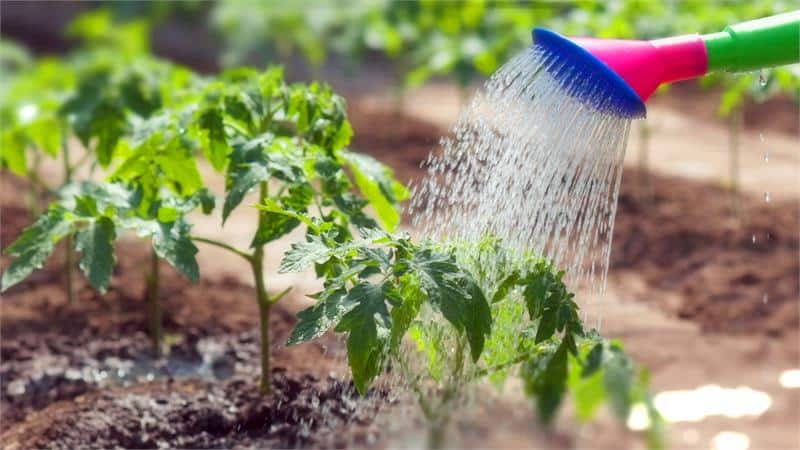
If you want to get healthy plants and please yourself with a rich harvest, you need proper care of the seedlings. Then the plants will calmly transfer the transplant to a permanent place. How to do this correctly?
As soon as two or three true leaves appear, immediately drop the sprouts into separate containers. When removing plants from the ground, the main thing is not to damage the central root. Carefully move the plants to the new location.
Moisturizing the soil is required only as it dries. Water with settled water at room temperature. The main thing is not to touch the plant itself, but to moisten only the soil.
During the period of growing seedlings, it is necessary to fertilize the soil at least three times. Fertilizers must contain a balanced complex of useful substances. Ten days after transplantation, the soil is fertilized for the first time, and the last time three days before transplanting into the ground.
An important point in transplanting a plant into the ground is hardening. It is produced only after the average temperature has settled above +8 °C. The seedlings are taken out into the fresh air, gradually increasing the time spent outside.
How to grow tomatoes
Seedlings are planted in a permanent location after the soil has warmed up. Usually this is the second half of May.
Landing
Plants are watered and fed abundantly three days before planting, since after transplanting the soil is not moistened for two weeks.
The beds for transplanting seedlings are prepared in the fall. They clear away plant residues and dig up the soil. The soil is fertilized with ash and humus.
In the spring, the soil needs to be dug up again and disinfected by watering it with a solution of potassium permanganate or copper sulfate.
Then holes are dug, the distance between them is kept at 50-60 cm. The distance between the rows is left at 60-70 cm. It is better to place the seats in a checkerboard pattern, this will save space. Immediately before planting, the seedlings are carefully removed from the pots along with a lump of earth and placed in the holes, forming roots towards the center.The holes with plants are filled with water at room temperature. When the water is absorbed, cover it with soil.
Plant care
Tornado f1 tomatoes need to be watered regularly, loosened and the soil periodically fertilized. Top dressing of the soil should be foliar.
Important! The peculiarity of the hybrid is low resistance to temperature changes and increased care requirements.
Tomato shoots develop poorly, so the plant does not waste nutrients on excess greens. It is still necessary to remove “empty” shoots in order to form one stem - a standard.
Features of cultivation and possible difficulties
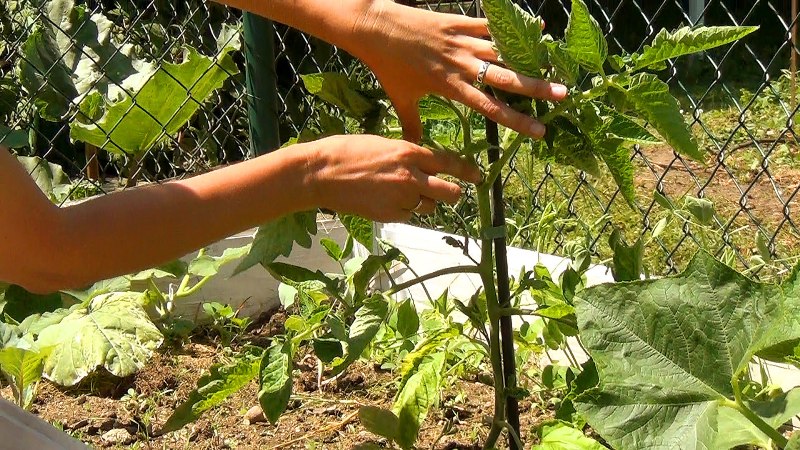
When growing Tornado tomatoes, a novice gardener may encounter a number of difficulties. The list contains the main ones:
- The bush grows relatively tall, so garters and pinching are required.
- If the soil is poor, few ovaries may form. Quantity feeding needs to be increased.
- When a large amount of greenery forms on the plant, the fruits begin to become smaller and ripen slowly. This indicates an excess of nitrogen in the soil. Adjust the amount of fertilizer.
- The fruits grow small. By reducing the number of flowers, you will increase the weight of the tomatoes.
- Cracking and wateriness of the fruit. This indicates that the gardener removed too much foliage and all the water went into the tomatoes.
The nuances of growing in open ground and in a greenhouse
Tornado is suitable for both greenhouse and open ground cultivation.
There are no particular differences in caring for these plants in both cases.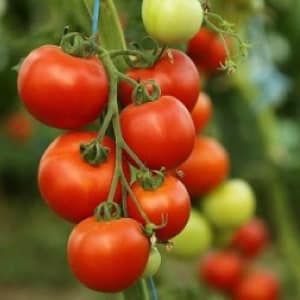
If you grow in greenhouse conditions, ventilation is necessary. Open windows and doors.
If we consider open ground, here it is necessary mulching. To do this, use hay, burlap, straw and film.
After transplanting into open ground, plants must be covered with film at night or in cold weather, and removed in warm weather.
Prevention of diseases and pests
Hybrid Tornado is resistant to major fungal and viral diseases. But without preventive measures, the risk of infection remains.
The seeds and the soil in which they are planted are treated with disinfecting solutions.
Adult plants are sprayed with “Fitosporin” or another non-toxic biological product with an antifungal effect.
Important! To prevent pests and their larvae from infesting, regularly inspect young tomatoes for the presence of insects.
Reviews from gardeners
Reviews about the Tornado tomato are positive. Gardeners who cultivated it are satisfied with the harvest and grow it again.
Lyudmila, Tver: «Last year I harvested a large harvest of Tornado tomatoes. The fruits are all the same size, large and sweet in taste. Stores well for several months. We use them fresh for salads and canned.”
Tatyana, Voronezh: “Although it requires attention, it produces a lot of fruit - large bushes are completely covered with tomatoes. Take the time to care for your tomatoes, and they will reward your efforts with a rich harvest.”
Conclusion
The Tornado tomato is a hybrid with bright red, sweet-tasting fruits of a perfect round shape. They reach an average size of 60-80 g, and in the southern regions - 120 g. They contain large amounts of sugar, vitamins and minerals, which helps to stay healthy and gives you energy.
In order not to be disappointed in this variety of tomatoes, it is necessary to observe the temperature regime, timely fertilize and water the plants.